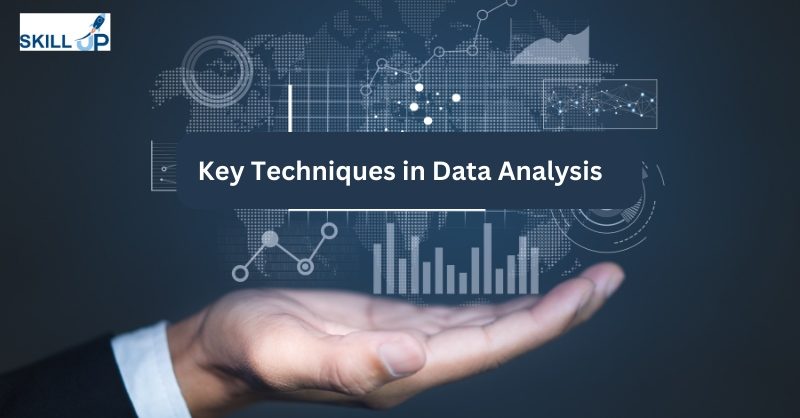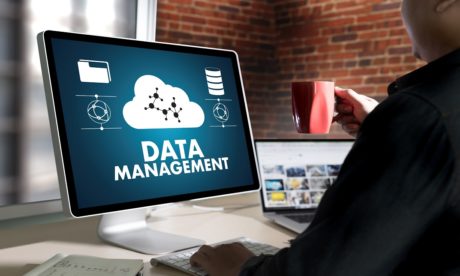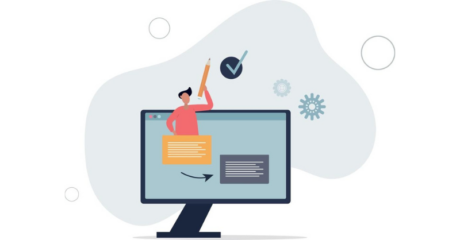
Data Analysis is a compelling process involving inspection, cleansing, transformation, and modelling of data with an aim to extract useful information, form conclusions, and support decision-making. Consider it as a mission to dig out hidden gold from a vast landscape of information.
The landscape is large indeed, hosting various methods such as statistical analysis, exploratory data analysis, and regression analysis. Python and R, as software tools, act as the handy pickaxes for any data analyst in this quest.
Table of Contents
Importance of Data Analysis in Business
In the dynamic world of business, data analysis has emerged as a powerful beacon. It is no longer merely a technique or method; it is a prerequisite for businesses to thrive. From forecasting trends to understanding customer behaviour, it forms the basis of business intelligence.
Businesses utilise tools like Microsoft Excel, Google Sheets, and advanced software like Tableau for analysing data. It allows them to draw analytics, make informed decisions, and predict future patterns. The realm of business analysis, thus, remains incomplete without the touch of data analysis.
Distinguishing between Qualitative and Quantitative Data Analysis
Data analysis can be like painting a picture. Sometimes it requires broad strokes, while at other times, it needs detailed work. Broadly, it branches out into qualitative and quantitative data analysis.
Quantitative data analysis is all about numbers. It uses statistical and mathematical techniques to derive results. Here, quantities are essential. For instance, how many users visited a website? How much time did they spend? It’s more about precision and numbers.
On the other hand, qualitative data analysis looks for patterns and themes beyond numbers. This branch utilises thematic analysis, content analysis and more. It interprets, rather than calculates. It delves into understanding why a certain user behaved in a particular way.
The Role of Data Analyst in Businesses
Amidst the wide canvas of data, the data analyst is the artist. These professionals skilfully utilise data analysis software and tools, applying both science and learning, to extract valuable insights. With Python for data analysis or certifications in Tableau, they structure and analyse data, providing businesses with actionable intelligence.
Whether it’s exploring healthcare trends or creating a tableau dashboard for a salesforce, a data analyst plays a pivotal role. They stand at the intersection of data science and business intelligence, harnessing the power of computers and information technology to drive business growth. Their contribution to various sectors and the expanding realm of data analysis jobs is truly unprecedented.
Starting with Data Analysis
Learning Data Analysis: Recommended Courses
Venturing into the realm of data analysis is akin to starting a thrilling journey. The path brims with intriguing courses for both budding and seasoned analysts. Some recommended ones are:
- Python for Data Analysis: Designed for Python enthusiasts, this course extends an in-depth understanding of how Python can revolutionise data analysis.
- Tableau Training: This course is a master-key to unlock Tableau's features, from the creation of dashboards to the development of charts.
- Microsoft Excel and Google Sheets: These courses focus on the usage of spreadsheets for quantitative data analysis, making them an essential learning milestone.
- Statistics and Regression Analysis: For the mathematics enthusiasts, these courses illuminate the path towards a robust understanding of statistical analysis and regression techniques.
Data Analysis Tools: A Brief Overview
The data analysis toolkit is teeming with multifaceted software. Some of them are:
- Microsoft Excel: An essential tool for managing and analysing quantitative data.
- Google Sheets: Excel's cloud-based cousin, perfect for collaborative data analysis.
- Python: A powerful programming language extensively used for data analysis and manipulation.
- R: A language and environment primarily used for statistical computing and graphics.
- Tableau: A leading software for creating interactive data visualisations.
Exploring Software Tools: Excel, Python, and R
The artistry of data analysis often flourishes with the help of software tools. Microsoft Excel provides a comprehensive environment for handling large datasets, performing calculations, and generating graphs. Similarly, Google Sheets leverages cloud computing to enable collaborative data management and analysis.
Python, with its rich library support and powerful data structures, has emerged as a preferred tool for data manipulation, analysis, and visualisation. R, on the other hand, is a paradise for statisticians and provides exceptional facilities for data analysis and display.
Getting Certified: Importance of Professional Certifications
Professional certifications are like coveted badges of honour, signifying proficiency in a particular domain. Acquiring certifications in Python, Tableau, or Excel not only augments one’s skill set but also boosts their professional standing as a business analyst. They act as a testament to one’s expertise, paving the way for rewarding opportunities in data analysis jobs and beyond.
Whether it’s about understanding tableau vs power bi or becoming proficient in SPSS data analysis, a certified professional gains an upper hand in the competitive landscape of data science and business intelligence. Thus, the journey of learning data analysis remains incomplete without the pursuit of professional certifications.

Key Techniques in Data Analysis
Understanding Statistical Analysis
Unleashing the full potential of data analysis pivots around a firm grasp of statistical analysis. Statistics assist in validating our data interpretation, providing a rigorous base for our insights. This approach encapsulates various data analysis methods like mean, median, mode, standard deviation, or more complex statistical inference techniques. With tools like Excel, R, or Python, executing these analyses becomes a streamlined task.
Regression Analysis: The Basics
Often, we want to predict or forecast trends based on existing data. That’s where regression analysis comes into play, making it an invaluable tool in the data analyst’s repertoire. By determining the relationship between variables, we can predict one variable (dependent) based on the knowledge of another (independent). From sales forecasting to healthcare predictions, regression techniques have varied applications.
Qualitative Research: Thematic and Content Analysis
Quantitative data, while precise, can be devoid of context. Qualitative research fills this gap by exploring non-numerical data like text, images, or objects. Thematic analysis involves identifying patterns or themes within qualitative data. Meanwhile, content analysis interprets the context and content of text data. Mastery of these techniques can provide richer, more nuanced insights.
Exploratory Data Analysis: Making Sense of the Data
Exploratory Data Analysis (EDA) is the Sherlock Holmes of data analysis. Its primary function is to ‘make sense’ of data by summarising its main characteristics, often through visual methods. EDA can reveal patterns, spot anomalies, test assumptions, and provide a thorough understanding of data for further analysis.
Mastering Data Collection and Preparation Techniques
Data collection and preparation are the unsung heroes in the data analysis process. They form the foundation upon which our analyses stand. Incorrect or improperly prepared data can lead to misleading results. Thus, understanding how to collect data (from APIs, SQL databases, or Excel files) and how to prepare it (cleaning, structuring, and integrating) is crucial for robust and reliable analyses.
These techniques serve as the backbone for businesses to derive insightful, actionable intelligence from their data. With an array of tools like Tableau, Power BI, Python, R and more, businesses can utilise these methods to harness the full power of data analysis, shaping their strategies for success.
Advanced Data Analysis with Specific Tools
Powering Data Analysis with Python
Python, a versatile and popular programming language, has become an invaluable asset for data analysts. It offers vast libraries like Pandas for data manipulation, Matplotlib for data visualisation, and Scikit-learn for machine learning. It powers complex tasks like artificial intelligence and regression analysis, further extending its data analysis capabilities.
Using Microsoft Excel for Quantitative Analysis
Microsoft Excel, a household name in data analysis, is particularly adept at quantitative analysis. It provides robust functionalities—like statistical functions, pivot tables, and charts—that can handle a diverse range of tasks, from simple calculations to advanced data modelling. Its business intelligence features enable forecasting and insights directly on your Excel dashboard.
Google Sheets for Collaborative Data Analysis
Google Sheets is a cloud-based tool, providing real-time collaboration, making it a favourite among teams. Beyond its capability for data analysis in research, it offers sharing and simultaneous editing that fosters collaborative analytics. Coupled with Google’s AI, Sheets can automate data insights and pattern detection.
SPSS Data Analysis: An Overview
SPSS, an acronym for Statistical Package for the Social Sciences, is a robust software package used for complex statistical data analysis. Predominantly used in social science research, SPSS provides advanced techniques like multiple regression, factor analysis, and ANOVA, fostering professional statistical analysis.
What is Tableau: A Comprehensive Understanding
Tableau, a powerful data visualisation tool, offers an intuitive interface that allows users to create interactive dashboards, charts, and more. It thrives in dealing with massive datasets and converting them into easily understandable visuals. The data analysis tools in Tableau allow data drilling, exploring nuances and layers of insights.
PowerBI vs Tableau: A Comparative Analysis
Choosing between Power BI and Tableau can hinge on specific needs. Power BI is integrated with other Microsoft products, making it suitable for teams already using the Microsoft ecosystem. It excels in data preparation and modelling. On the other hand, Tableau’s superior visualisation capabilities can handle larger datasets, making it apt for companies focused on detailed reports and complex visualisations.
These tools each serve their unique strengths, but at their core, they help businesses derive insights from data. With the right tool, one can elevate their data analysis process, making data-driven decision-making a standard.

Deep-Dive into Tableau
Understanding Tableau: Public, Desktop, Server, and Cloud
Tableau offers a range of products, each designed for distinct needs. Tableau Public is a free service ideal for personal projects and skill-building. Tableau Desktop is a professional-grade application that allows for robust data exploration. Tableau Server facilitates data sharing and collaboration, while Tableau Cloud offers the same services, but without the need for any infrastructure maintenance.
Building Visualizations: Charts, Dashboards, Histograms, Sankey Diagrams
Tableau shines in creating vivid, interactive visualizations. It facilitates the construction of comprehensive dashboards, charts, histograms, and Sankey diagrams, which provide a visual representation of data flow. By offering a wide palette of color schemes, Tableau enables aesthetically pleasing and insightful visuals.
Creating Calculations: Parameters, Variables, Rows, Columns, Fields
Tableau permits in-depth data manipulation through calculations. Users can create new data from existing fields using calculations, apply variables to alter visualization, or use parameters to experiment with what-if scenarios. Columns, rows, and fields can all be manipulated to fine-tune data presentations.
Downloading and Using Tableau Desktop
Tableau Desktop, an installed application, serves as your workbench for data analysis. After downloading from the official site, it offers a range of tutorials for mastering the software. Tableau Desktop provides powerful tools for data analysis, enabling dynamic and visually compelling data stories.
Salesforce Tableau: An Introduction
Salesforce’s acquisition of Tableau has brought powerful analytics to the Salesforce platform. Salesforce Tableau enables businesses to leverage their Salesforce data to drive better decision-making and create a seamless connection between data collection and data analysis.
Preparing for Tableau Certification
Earning a Tableau certification demonstrates proficiency in this tool, enhancing credibility in data analysis. Preparation involves learning about data visualization, understanding Tableau’s interface and features, and gaining practical experience. There are several training resources available, including Tableau’s own learning platform, which provides comprehensive tutorials and test prep materials.
Data Analysis in Different Sectors
Business Intelligence and Analytics
In the business sector, data analysis drives Business Intelligence (BI) and analytics, converting raw data into meaningful insights. Businesses utilise BI tools like Microsoft Power BI and Tableau to gather, analyse, and present data in easily digestible forms such as dashboards and charts. BI offers forecasting capabilities to predict trends, aiding in proactive decision-making.
Application of Data Analysis in Healthcare
Data analysis holds transformative potential for healthcare, enhancing patient care and operational efficiency. From patient record analysis to disease outbreak prediction, data science is paramount. Tools like Python and R allow healthcare professionals to make statistical inferences from large datasets, aiding in the early detection of health trends and improvement of treatment strategies.
The Role of Computers and Information Technology in Data Analysis
The role of computers and IT in data analysis cannot be overstated. Powerful software tools automate data collection, cleaning, analysis, and visualisation. Cloud computing allows analysts to work with vast datasets and complex calculations beyond the capacity of traditional systems. Ethical considerations, such as adherence to the General Data Protection Regulation, ensure that data analysis activities respect privacy rights and maintain data security.
The Biological Life Cycle: A Data Analysis Perspective
Lastly, data analysis is also pivotal in biological sciences. Through analysing the biological life cycle, scientists can make important discoveries about growth patterns, disease spread, and the environmental impact on species. Techniques such as regression analysis and quantitative data analysis facilitate the understanding of complex biological phenomena. The use of software like SPSS in research introduces rigorous statistical validity to biological studies.

Data Protection and Ethical Considerations
Understanding General Data Protection Regulation (GDPR)
Navigating the complex landscape of data analysis requires a clear understanding of the General Data Protection Regulation (GDPR). This legislation safeguards EU citizens’ data privacy, mandating strict protocols for data collection, storage, and use. Businesses must adhere to these regulations or face severe penalties, underscoring the essential role of GDPR knowledge in the professional life of a data analyst.
The Ethics of Data Analysis
When analysing data, ethical considerations are paramount. The key lies in striking a balance between garnering insights and respecting individual privacy. Analysts must ensure they only use data for the purpose it was collected, avoid misrepresentation of results, and take care to avoid bias. Ethical use of data analysis tools, from Microsoft Excel to complex cloud computing solutions, is non-negotiable.
Ensuring Data Security in Cloud Computing
As data shifts to cloud-based storage and analysis platforms like Google Sheets and Databricks, data security concerns escalate. Analysts must adopt rigorous security measures such as robust access controls, encryption during data transfer, and regular audits to protect against breaches. Understanding cloud computing’s intricacies and potential risks is integral to maintaining data security.
The Intersection of Artificial Intelligence and Data Privacy
Finally, the advent of artificial intelligence (AI) in data analysis has triggered fresh privacy concerns. AI can process vast quantities of data at unprecedented speeds, posing new challenges in data management and privacy protection. Ethical AI usage requires vigilance to ensure algorithms do not unintentionally violate privacy laws or amplify biases, emphasizing the importance of ethics in data science.
The Future of Data Analysis
The Rise of Data Science and Artificial Intelligence
In the ever-evolving realm of data analysis, the burgeoning fields of Data Science and Artificial Intelligence (AI) represent a thrilling new frontier. Data science, with its multidisciplinary approach, intertwines statistics, computer science, and domain expertise, fostering new insights and solutions. Meanwhile, AI’s capacity to learn and adapt is transforming the analysis landscape, paving the way for automated data collection, pattern recognition, and even predictive analysis.
Future Jobs in Data Analysis
In tandem with these developments, the data analysis job market is set to expand. Professionals with a deep understanding of data analysis techniques, AI, machine learning, and advanced tools like Python, R, and SQL, are poised for a bright future. Jobs like data scientists, AI specialists, and business analysts will witness growing demand as businesses harness data’s power for strategic advantage.
The Role of Data Analysis in Forecasting and Predictive Modeling
Increasingly, data analysis is playing a critical role in forecasting and predictive modeling. Analysts are leveraging statistical techniques and AI-powered tools for regression analysis and other predictive models, aiding businesses in making informed decisions about future trends. From health care to finance, the predictive power of data analysis is set to revolutionize many sectors.
The Emergence of New Tools: Databricks, Snowflake, and Beyond
The toolkit for data analysis is continually expanding, with software like Databricks and Snowflake revolutionizing data processing and analytics. Databricks, an AI-based cloud platform, offers unified data analytics, while Snowflake’s cloud data platform enables seamless data storage, processing, and analysis. As we move forward, expect to see more such tools reshaping the future of data analysis.
Conclusion
Data analysis has transformed into a cornerstone of modern business, enabling strategic decision-making, technological integration, and enhanced compliance with evolving regulations such as GDPR. The evolving job market underscores the importance of continuous professional development, with growing demand for expertise in tools like SQL, Tableau, and Power BI, and techniques like regression and thematic analysis. Future prospects signal the deepening integration of artificial intelligence, predictive modelling, and advanced software, underlining the significance of data science. As these elements merge, data analysis proves to be a multifaceted approach to business improvement, with diverse applications across sectors, vital ethical considerations, and an optimistic outlook for the future. It is clear that the capacity to adapt, learn, and innovate using data analysis is no longer optional, but a vital necessity for businesses striving to excel in this dynamic era of data-driven transformation.
















